JBL LSR305 Studio Monitor
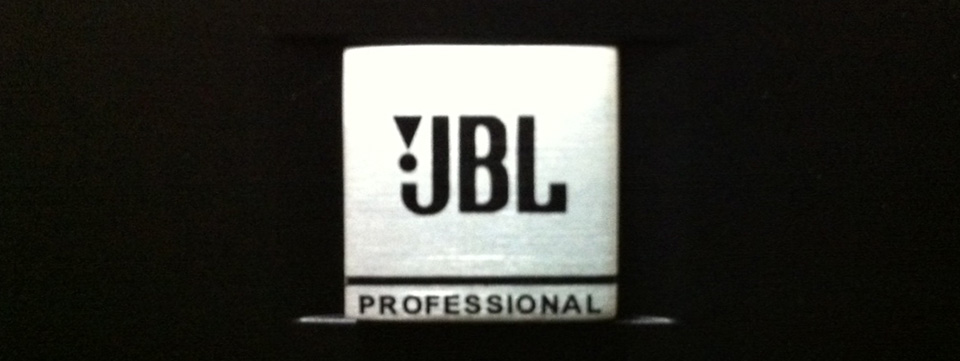
People have been asking me to review these speakers for months. The claim is that there is something special here, a new bargain, a new answer for audio perfection on the cheap. Well here is the review, let's see what all of the buzz is about.
Note: There have been plenty of write ups on the pros and cons of using these speakers as studio monitors. This review is from the perspective of an objective audiophile tall on expectations and short on budget, so try to keep up.
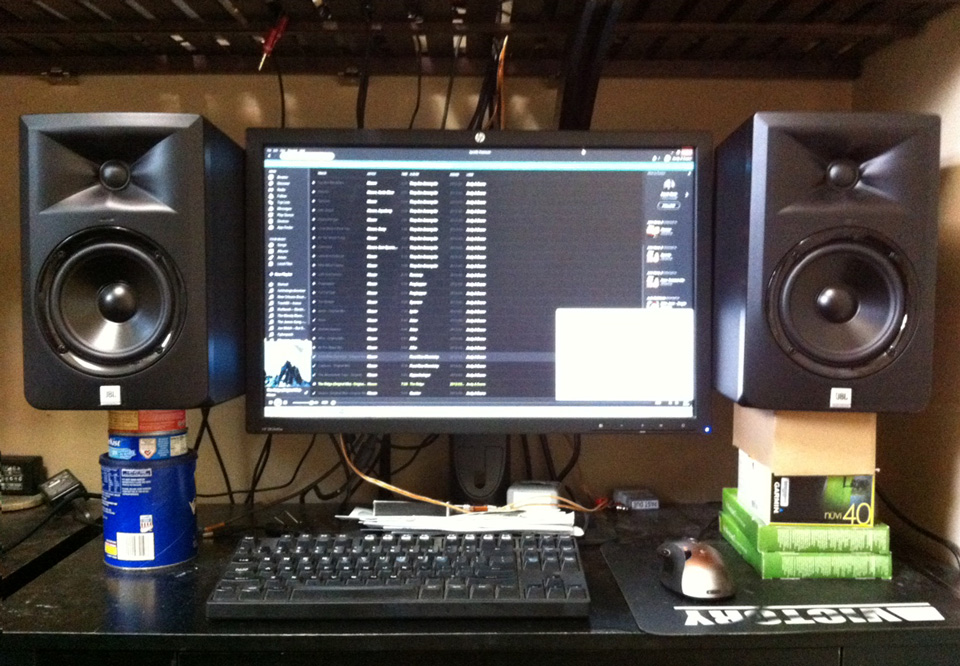
They just barely fit on my tiny desk, and yeah they needed stands. At a little over 10 pounds a piece the random garbage collection was sagging a bit under the weight of these monsters.
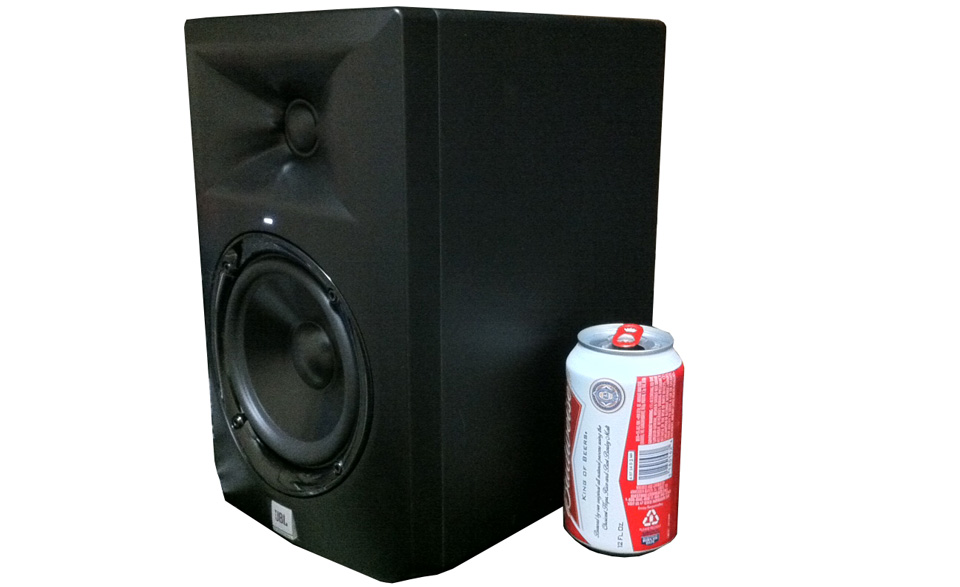
Merica for scale.
My wife said these are the nicest looking speakers that I've tested. I think they look like Batman's speakers.
Component Overview
I do my listening before I pull a speaker apart, but I find it's best to explain the components so that readers know what I'm talking about in the listening impressions section. So here is some details on the stuff that makes the sound.Tweeter
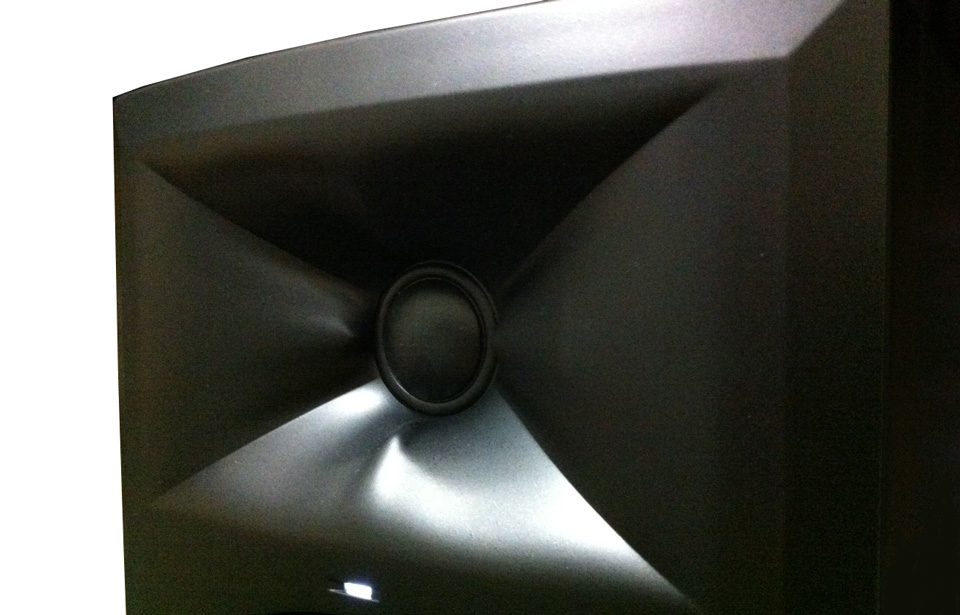
That's a textile dome and it has rolled surround that makes it look bigger and helps push down the resonance frequency of the driver so it can crossover lower. The dome sounds good, and I did not hear any distortion from it while damaging my hearing with test tones.
No one really cares about the driver though, the real star of the show is the waveguide. I'm guessing you want to know if it works.. well, yeah it works like a fucking champ.
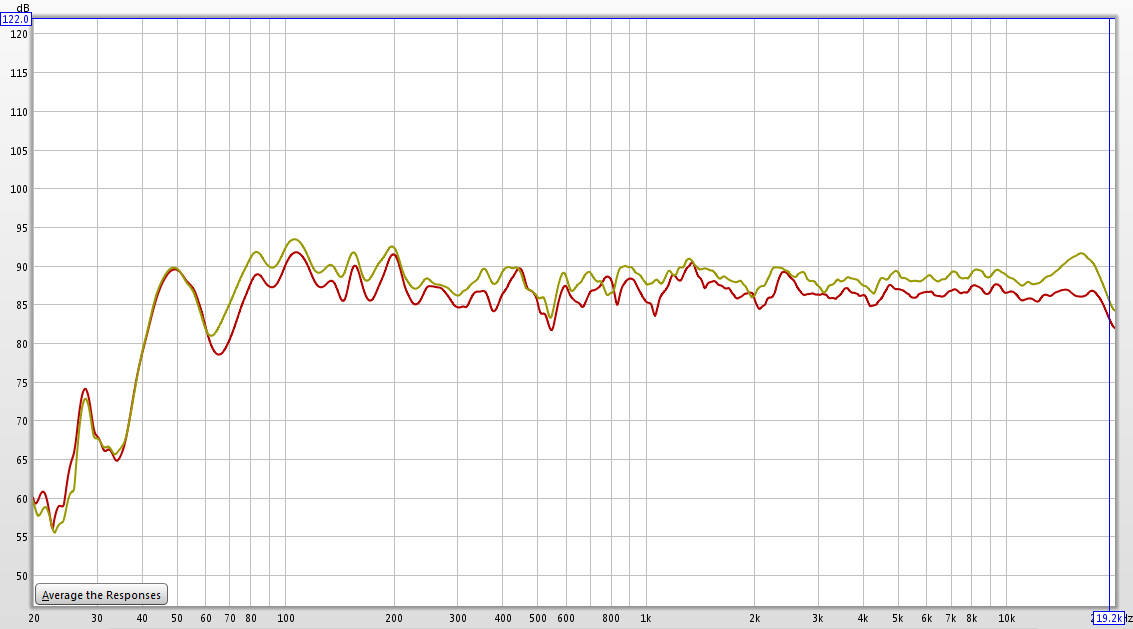
Freehand pointing a microphone at the speaker in a random ways comes back with some of the best measurements I've ever recorded, this pattern control is god like. Bow down to your new waveguide overlord.
Woofer
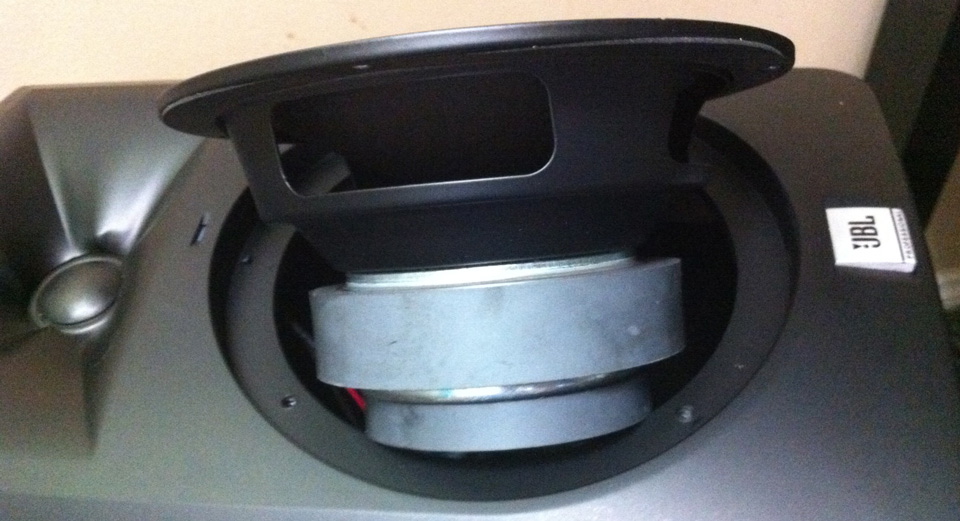
The woofer is a 5 inch injection molded poly cone with very soft butyl rubber surround. I've always liked poly woofers, and this one plays clean and loud. no complaints for its size it does a hell of a job.
The spider very large and seems to control the woofer very well. There is an extra backing magnet on the woofer, this increases magnetic force around the voice coil which helps with efficiency. It also helps cancel magnetic interferance outside of the speaker, which I'm guessing might be a factor with it sitting a few inches from the amp board.
Port
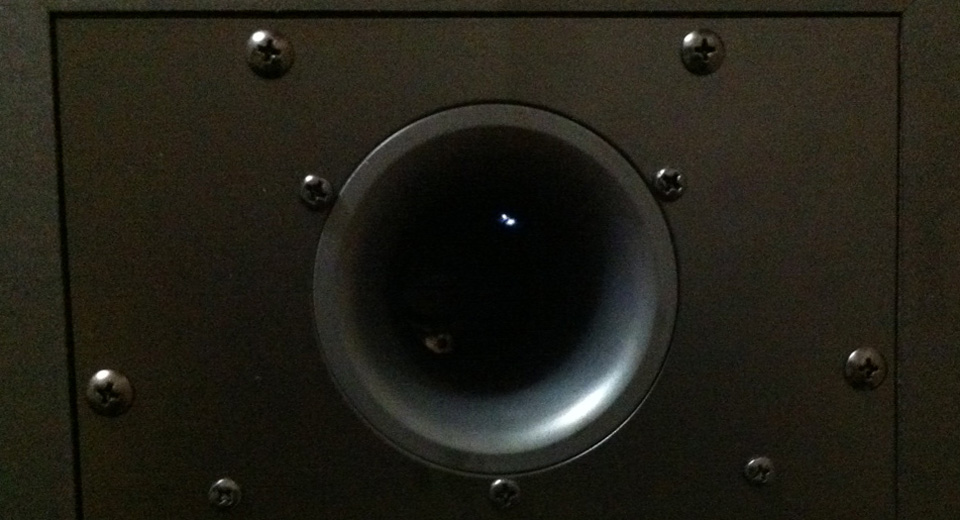
That's a port, it's a flared port, and seems to be tuned to a reasonable frequency. The -3dB point on this speaker is 43Hz on the spec sheet, and I get exactly that in my room.
If you look closely you can see a little light bleeding from the front LED. I did not notice this on my back walls in pitch darkness, so it should not be an issue.
Plate Amp
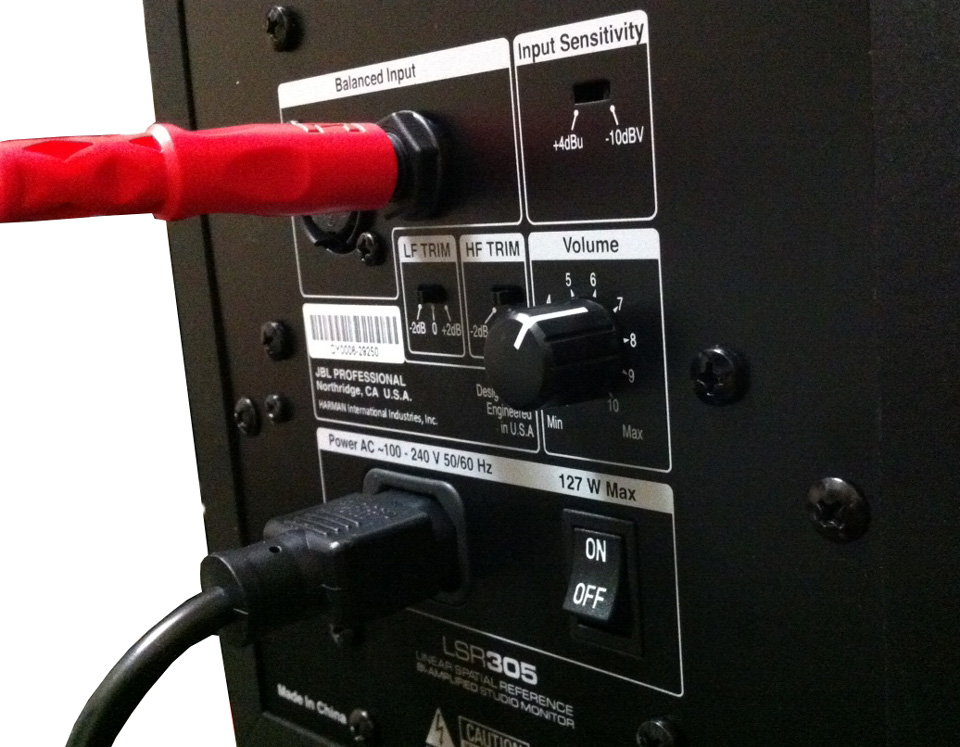
Balanced connection on the back of the amp as well as a prosound/consumer level input sensitivity switch. The speakers ship with consumer mode as the default, and I did not have any issues using unbalanced RCA to 1/4 inch jack cables.
The power switch is back here, and turning them on an off is a pain in the ass. Lucky for us they can be plugged into a switched power bar or other remote AC switch because there is a soft start/delay when turning them on. The delay is long enough for me to turn on one speaker, walk over to the other, turn it on, and then look at the first and wonder if it's going to turn on.. and then it does.
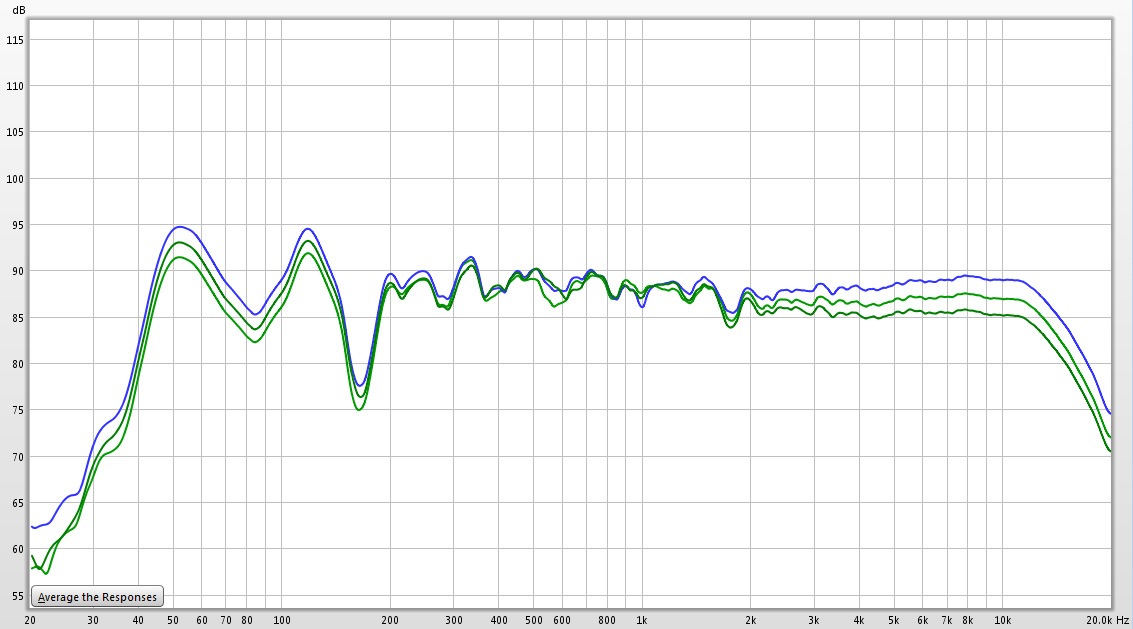
The trim controls are not to be touched.. they work just fine, but the speaker is so tonally correct out the box if you touch these you are making the speaker sound worse. Also, my measurements below 600Hz are just completely random depending on where the microphone and speakers are placed.
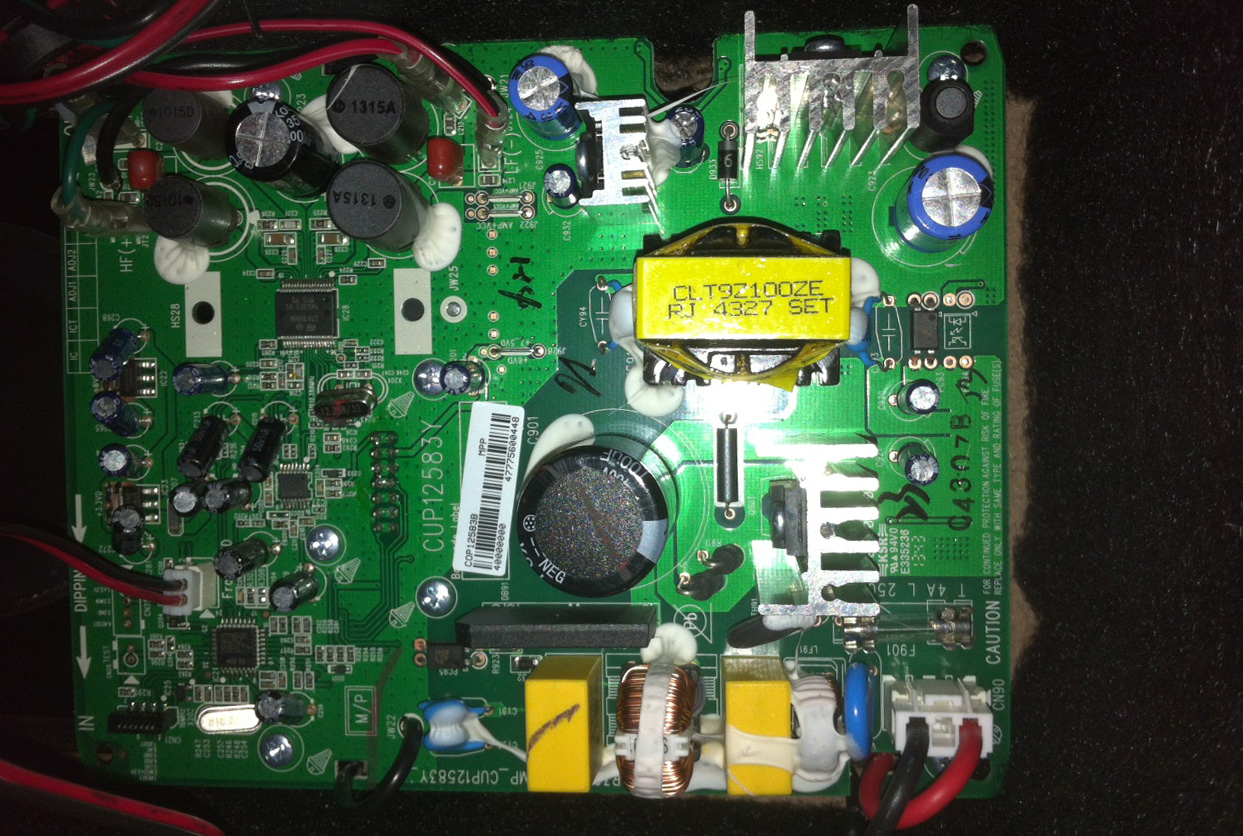
You know those JBL guys make pro amps, and as a part of Harmon they also have a few people in the rolodex from companies like Crown, and Mark Levinson. Based on all of that I'm going to take a stab and guess that this is not an off the shelf part. The amps here are class D amps, 41 watts per driver, so 82 per speaker, or more than enough to damage you and sound great doing it.
Lights
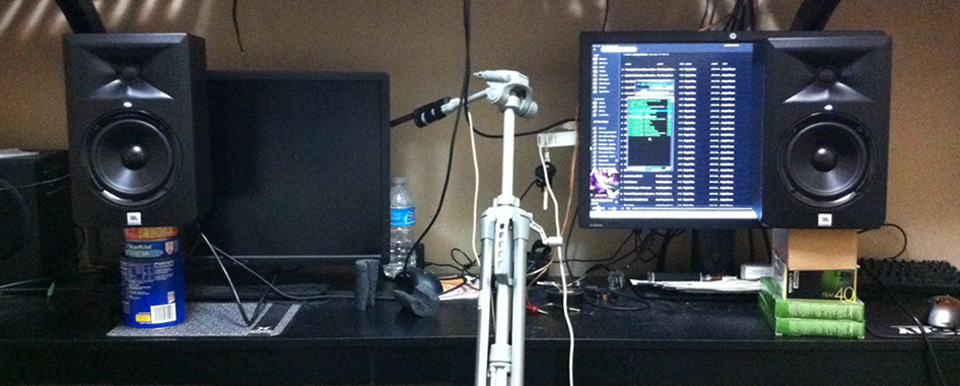 - press multiple times for extra silliness
- press multiple times for extra silliness
It's got lights front dead center. These are to be used in the dark to align your ears for the best imaging. They are bright, but much like the waveguide they diffuse nicely and don't beam.
Enclosure
The fit and finish of the enclose is very nice. The only problem I see here is the trim ring on the woofer is kind of shit and it looks like it wants to rattle. If you want to be "one of those people" then you can get out your 3mm allen key and make sure the woofer screws are snug.
The wood of the box does not seem very thick, and if I had to guess I would say it's the normal cardboard junk I see on just about every cheap speaker from China. JBL was nice enough to cover the inner side walls with some type of black foam, not sure if it's doing much, but it looks nice when you open the box.
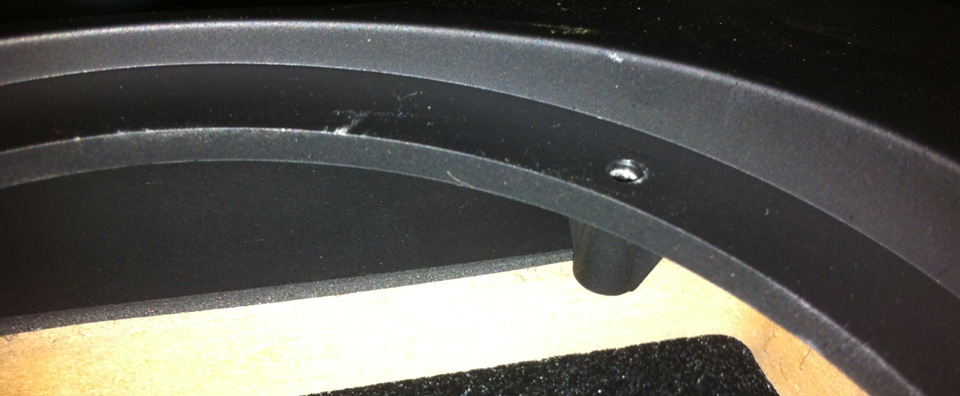
Oh the humanity... the baffle is molded plastic that doubles as the waveguide, it's about as thick as a milk crate, or about 1/8 inch, and seems to be glued to the wooden box.
Charles Sprinkle the designer of this waveguide said that the M2(high dollar version of these speakers) waveguide is filled with epoxy on the back to eliminate ringing because the waveguide can act like a bell. From what I can tell this would be a pretty simple DIY upgrade to these speakers if you can source the epoxy and not melt the baffle in the process. There is a lip that follows the outside edge of the baffle to attach it to the wooden box, so you should be able to just pull the plate amp off of the back and fill it up to that point and wait for it to dry.
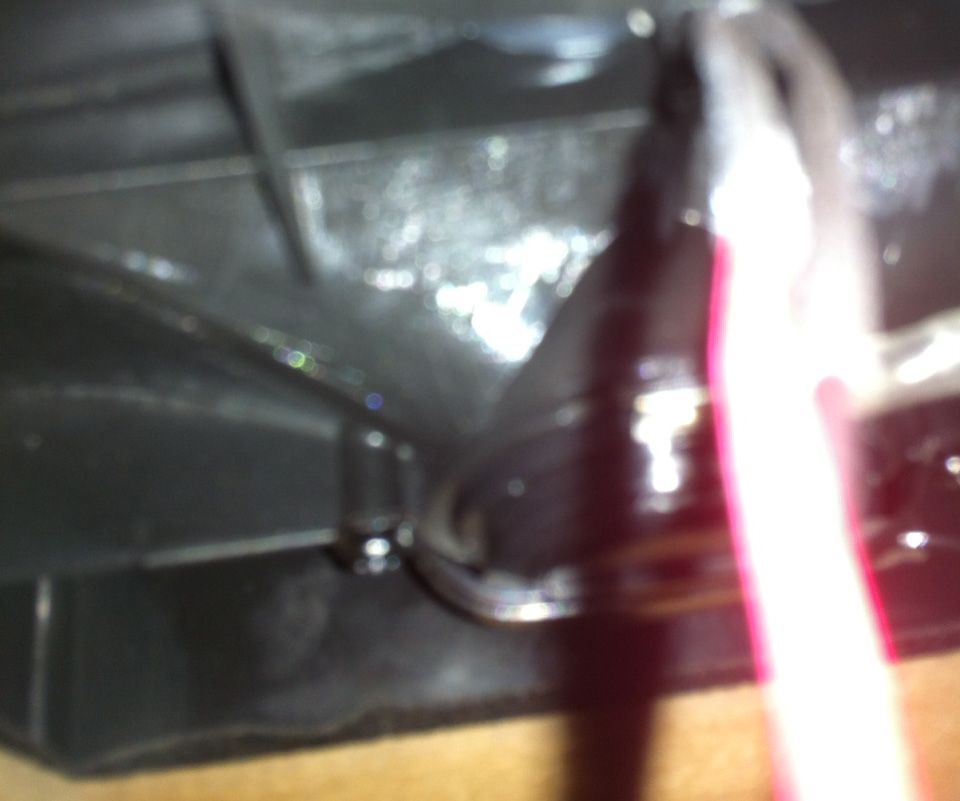
This is the best photo I could manage of the back of the waveguide which shows ribbing and looks like someone took some time to try to make this as good as it could be given the material choice.
While there are downsides to having a thin plastic baffle JBL made lemonade out of lemons and took the opportunity to physically time align the drivers. Time alignment means that the tweeter and woofer's acoustic center are on the same vertical plane, something normally done on a flat baffle speaker by tilting it back.
Desktop Setup
Well, this is my best attempt at simulating a proper sized desk setup. Speakers ended up a little less than 4 feet apart and directly in front of the computers.

The source is a computer playing flac ripped from my small cd collection and high bitrate spotify. I switched between my receiver's headphone output and a UCA202 DAC, both of which sounded good, but the UCA202 has some buzz on it when used the JBL's. It seems like power supply interference as the noise get's better the further away from the computer I can get it.
Listening Impressions
Well, these sound good out the box. Not in a generic "it makes music good" way, but good on the level of "Compared to everything I've ever heard these sound good." In this setup these speakers have more detail than anything I've heard. Hands down no shit detail, not colored rising response detail. This is the kind that you get from a dead room with headlight beam dispersion speakers, but these are not headlights, and this room is anything but dead.
What is going on here is that the direct sound from the speaker is tonally matched to the reflected sound, so everything gets covered in wonderfully neutral sound. This matches up with Harman's research as the best way to listen to music, but it is a sea change from solutions like I saw recently with the Von Schweikert VR4's where they put a tweeter on the back of the speaker to correct the tone of reflected sound without addressing the forward sound dispersion.
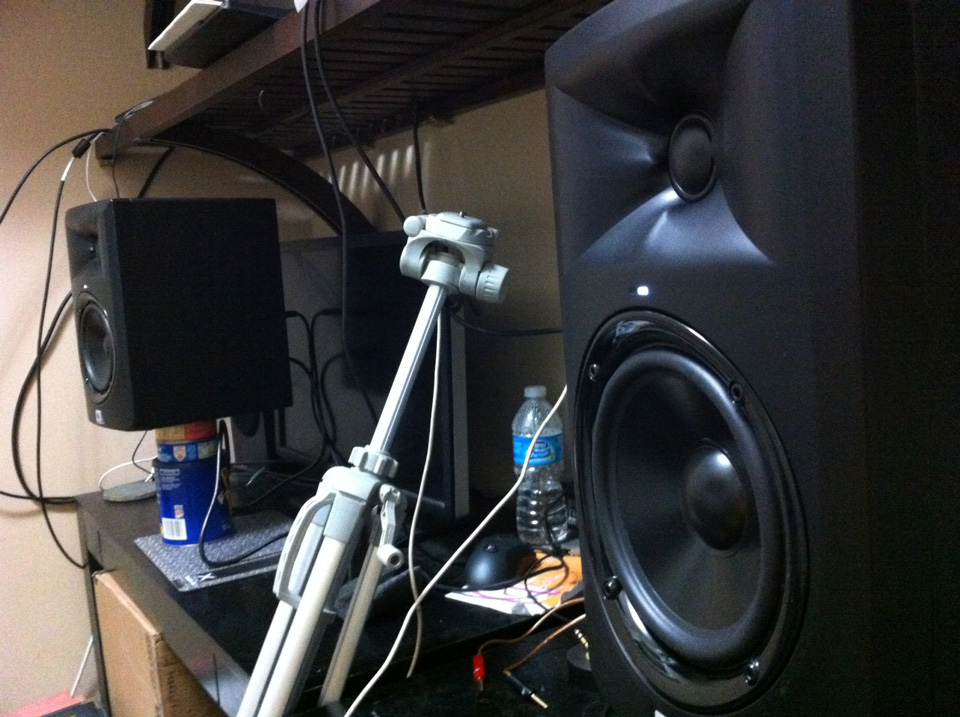
You see that speaker way over there, well I can hear that speaker, and it sound good and neutral and I can hear every detail coming from it.
Trouble in Paradise, or the Harshness
Even though the sound measures flat and sounds correct I get the impression that there is too much information in the upper midrange, particularly in drums and vocals. First impression was that this is a side effect of the dispersion and my ears just need to get used to the sound, so I did.
I've had these speakers for a few days now, and I've listened to them for about 100 hours. It's a never ending marathon of messing with positioning, taking measurements, dicking with the hi and low gain/cut switches, playing test tones, playing the same songs over and over trying to nail down what it is that bugs me about these speakers. I've even called in help, my buddy Scott listened to them and after calling me crazy now plans to buy these speakers off of me after I finish the review, replacing my DIY Madisound speakers and his HK3490 amp in his living room. These speakers are that good.
The only person who in anyway agreed with me was my lovely wife. Now my wife is normally not the kind to say anything about my speakers other than I have too many, and has probably the most untrained ear out of anyone I know. Less than 4 minutes of being in the room with the speakers she said that it sounded too crazy like things were all over the place. I took that to mean that she heard the same thing I did, then she left the room and I got to work.
Powered by what I took as support from my loving wife I took a stab at making a correction for these speakers. They measure pretty damn flat to start, and the on axis and off axis sound work together hand in hand to create a uniform flat sound for the room. Correcting Sir Andrew Jones speakers is one thing, but I'm about to commit heresy by putting makeup on Harman's baby and eqing one of the most naturally flat speakers I've ever run across. My self justification is that if JBL had DSP in the budget they would have used it, and the M2's use DSP so it's fair game.
Enter the EQ
Starting the EQ process I have no idea what I'm looking for, it all looks good and I'm certain my measurement setup is garbage below 500Hz, and above that not good enough to be 100% sure that something is from the speaker or from the room. I start by just trimming the above 10k to make it flat and I hear nothing, absolutely nothing. This isn't too much of a surprise as there is not much up there in music and it's not exactly a stunning realization that I can't hear a 3dB shift at 15kHz. well at least it looks nice on the graph.
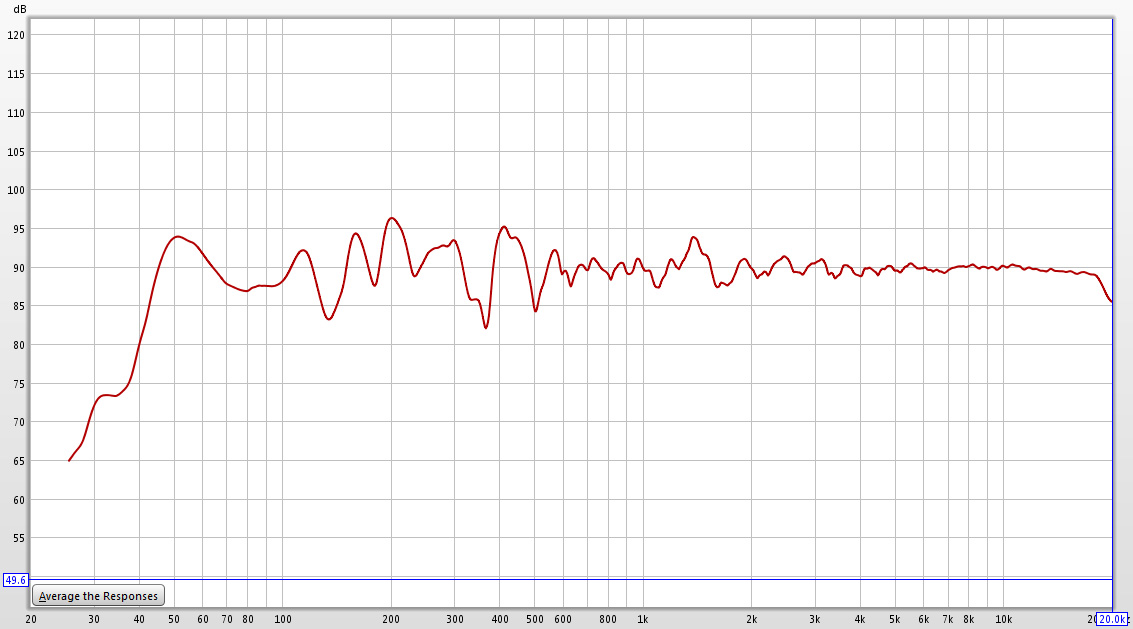
Taking a more heavy handed approach I go full retard and smash it flat down to 800Hz just to see what if anything happens. Well, I take what is a +-2.5dB response and make it +-.5dB. The biggest change is a tiny spike centered at 1350Hz. I adjust everything back to level so as to not mess with the tone. I enable the EQ and... again nothing... well I'll just listen for a bit.
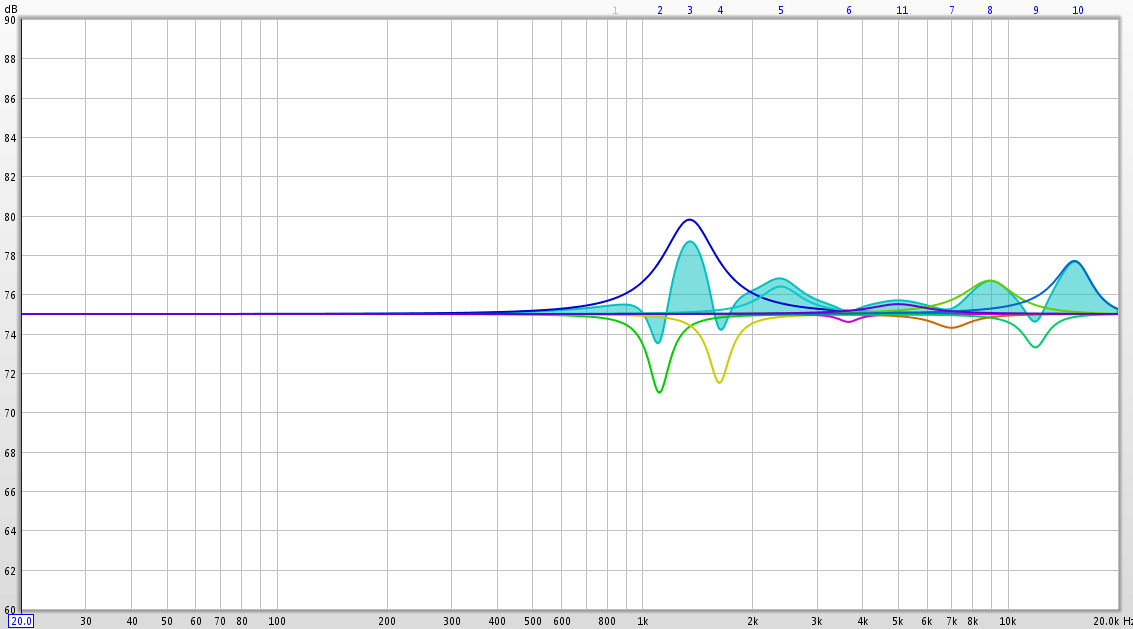
Then I heard it, it's the slightest sound of distortion that was there is now gone. This change is so slight that while I can A/B it, it's depends what song is played how long it will take me. It's actually easier to spot off axis vertically(stand up in front of the speakers) which may be why my wife heard it when she passed through the room.
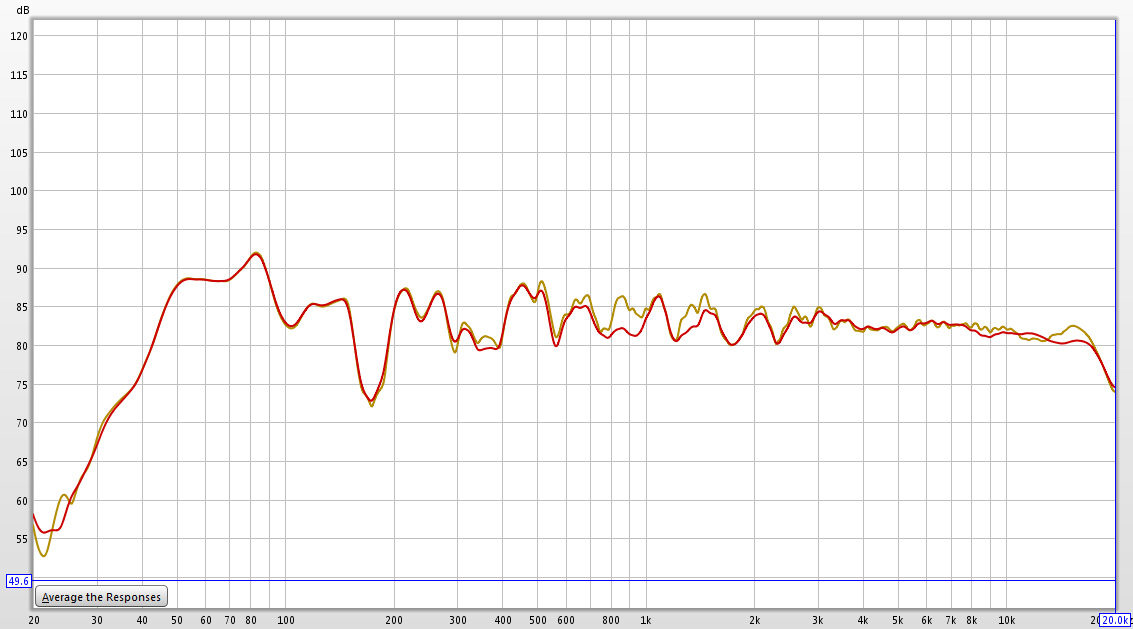
Listening position measurement of before and after the correction.
Measurements
OK, so that spike at 1350Hz is not my room, it's the speaker behaving badly. Let's see if we can find the source.
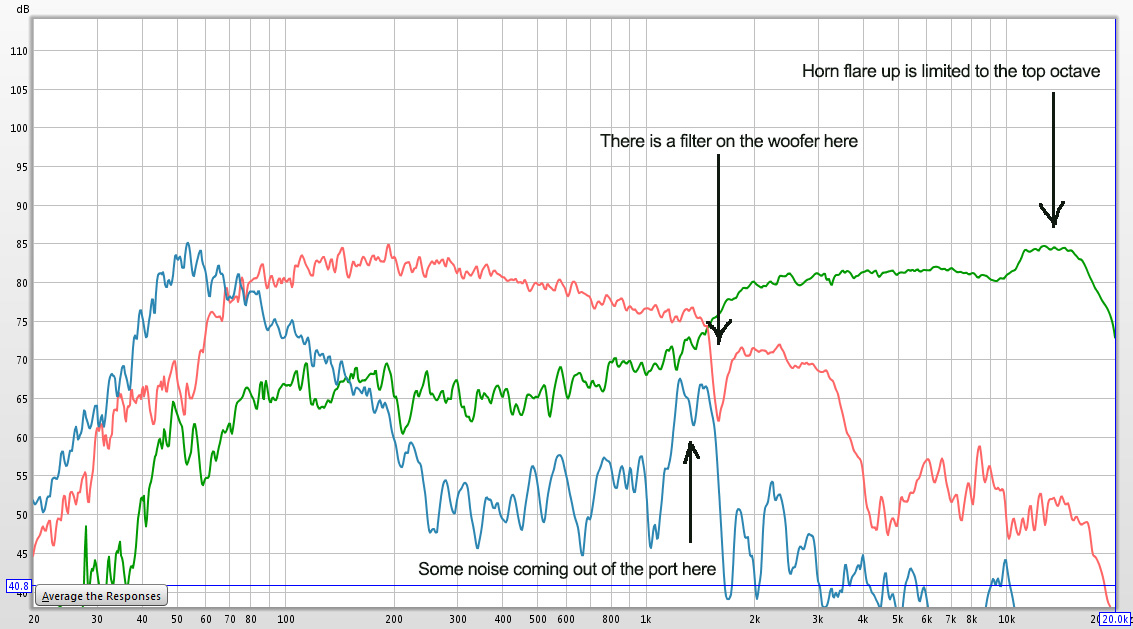
Here are the close mic measurements of the drivers.. all looks good, but the port is putting out sound in the range of interest. Let's see plugging the port does us any favors.
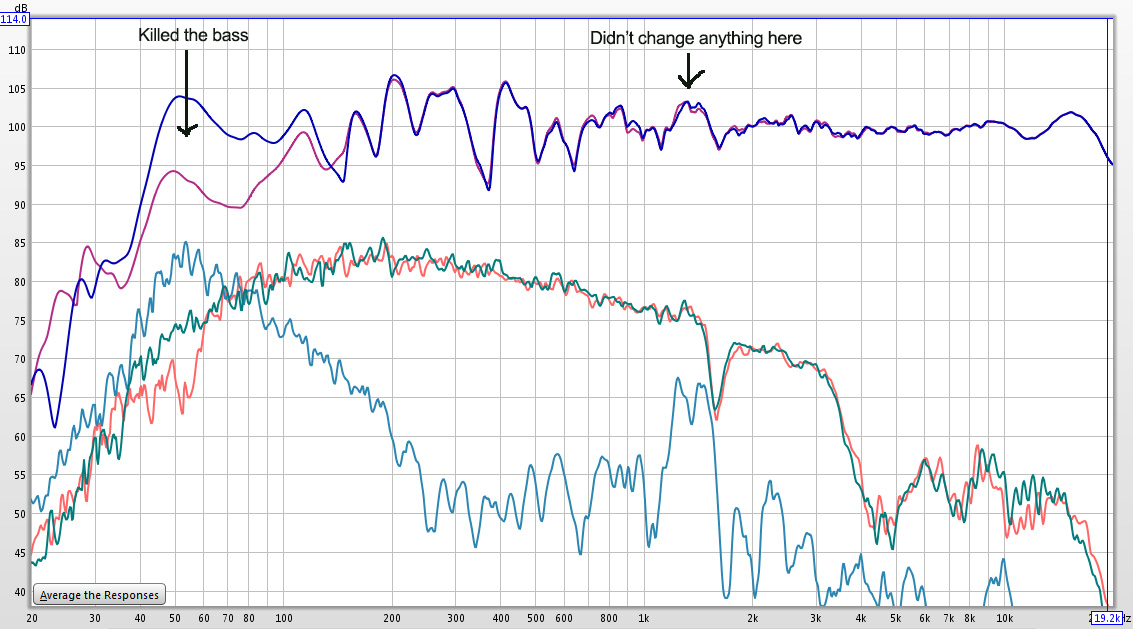
Well, the port is not the source, if I had to guess I would say that something in the box is ringing and making this sound, but it could be the drivers themselves. A knock on the side of the speaker after finding out about the budget construction gives a metallic ringing to it, maybe the amp board resonating. I can't be sure, but I've turned down the drivers in the effected range and now I can't hear it, so maybe it's something as simple as edge defraction. Maybe some JBL waveguide designer will spot this review and either let me know I'm an idiot or tell me what I'm hearing.
Living Room Setup
These speakers act like big shit on the desktop, so it's time to take them to the floor and punish them publicly to see what they can take when provided room to perform. I've got them plugged directly into the RCA output from my aging squeezebox and I'll be cranking to volume by hand on the back of the speakers. No DSP correction, just raw performance.
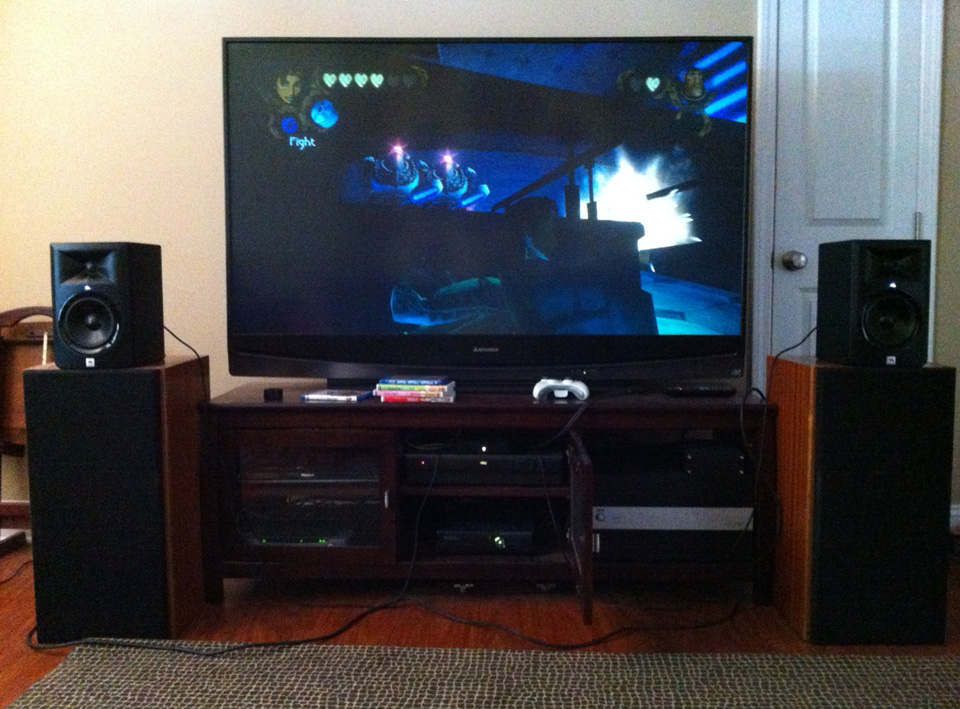
The imaging is there, the waveguide competes very well with the RAAL tweeter on the Selah Mejor's for imaging and smoke it for detail in my shity living room.
Bass perfomance is put to the test, and it falls apart a bit here and there sounding compressed when I crank the volume to couch shaking levels. A high pass filter would definately help clean up the bass response, but the tweeter still is performing to task, clean and perfect with no compression.
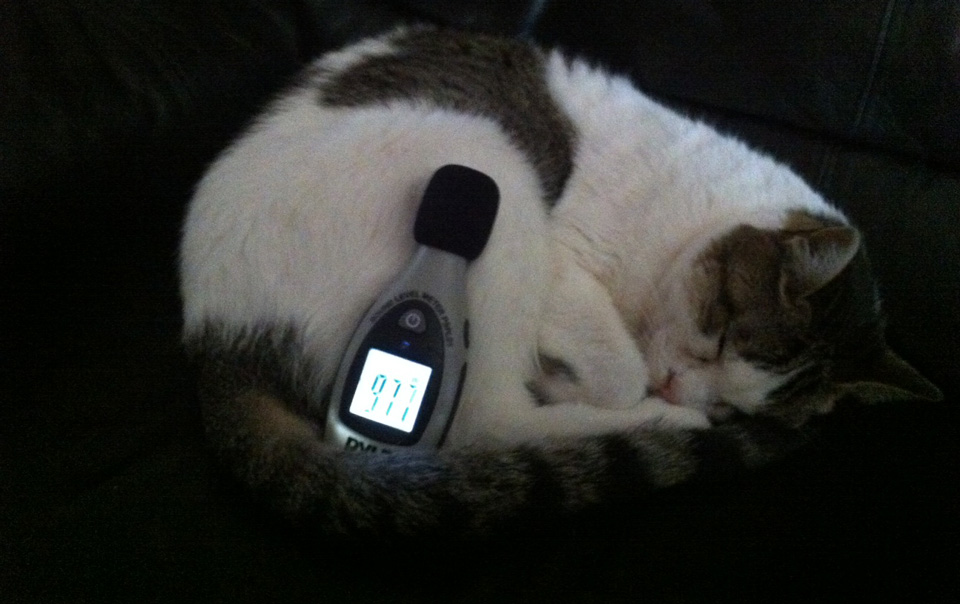
My expectations for living room system is that it should be able to entertain a crowd of drunk people dancing around like idiots... this is just about loud enough, and it has more in it as I'm not hearing distortion.
Thoughts on the JBL LSR308
My buddy Scott will be picking the up LSR305's soon and I plan on taking on the JBL LSR308's as my next review when I get the cash together. If you are thinking of picking the 308's up just consider that they are freaking gigantic,
think 90's bookshelf speaker huge. I'm not sure how I'll fit them in the office for testing, and if they employ the same construction methods they may have structural problems that are not showing up on the 305 with it's smaller
everything.
Update: JBL LSR308 review is done
Conclusion
The JBL LSR305's have changed my mind about what constant directivity can do. Even if you have a kicking HiFi now you might want to pick up a pair of the JBL LSR305's as something to try out. For the price and something you can send back to Amazon without issue it's kind of silly not to do it. I've never tested anything so uniformly flat both on and off axis in the treble range, and they have a ton of detail in there with the reflected sound and direct sound both being damn near flat it makes for a new experience. The areas that it's lacking are in euphoric's, and a realistically sized/shaped sound stage, but closer than normal placement to side walls and running with some toe in seems to help with those issues.
Click here to buy JBL LSR305 speakers.
Click here to get the DSP correction file for the JBL LSR305 speakers.
Check out the system finder to see what I recommend.
Other content you may like:
- Vanatoo Transparent One Review - Software update brings new standard of performance!
- Lone Star Audio Fest 2018 - Staying up late, drinking too much, smoking like chimneys!
- Andrew Jones goes back the be begining, ELAC B5.2 Debut 2.0 Review is up!
- New Scores for all reviewed speakers - Compare and sort for fun!
- Creative Sound Solutions DIY Solution for the high end - CSS Criton 1TD v2 review is up!
- Dayton Makes a Budget Desktop speaker with a crossover - Dayton Audio MK402 review is up!
- Smaller than small, deeper than deep - iLoud Micro Monitor review is up!
- Vanatoo's new speaker, The Transparent Zero review is up!
- SVS Prime Bookshelf Review is now available for your viewing pleasure
- ELAC A-Stock UB5 Listening Impressions are up!
- 30 years in the making, the ancient Bose 901 finally gets measured - The Bose 901 review is up!
- Lock and load, we are hitting the bottom of the barrel with both barrels - The Logitech z313 review is up!
- Bulletproof speakers... No, it's just the B&W 686 S2 Review!
- Declare independence from the British sound! - The KEF Q300 review is up!
- Recommended System Finder - Just in time for the Holidays!
- JBL LSR308 Studio Montor - Super Massive Epic Review!
- Two years after starting this site I finally get around to talking about my stereo.
- Small and cheap speakers transform into retarded and good... Micca COVO-S Review!
- AMT tweeter on a B652? The Dayton B652-AIR is reviewed for great justice!
- JBL LSR305 Studio Monitor Review!
- Zu Essence Review!

